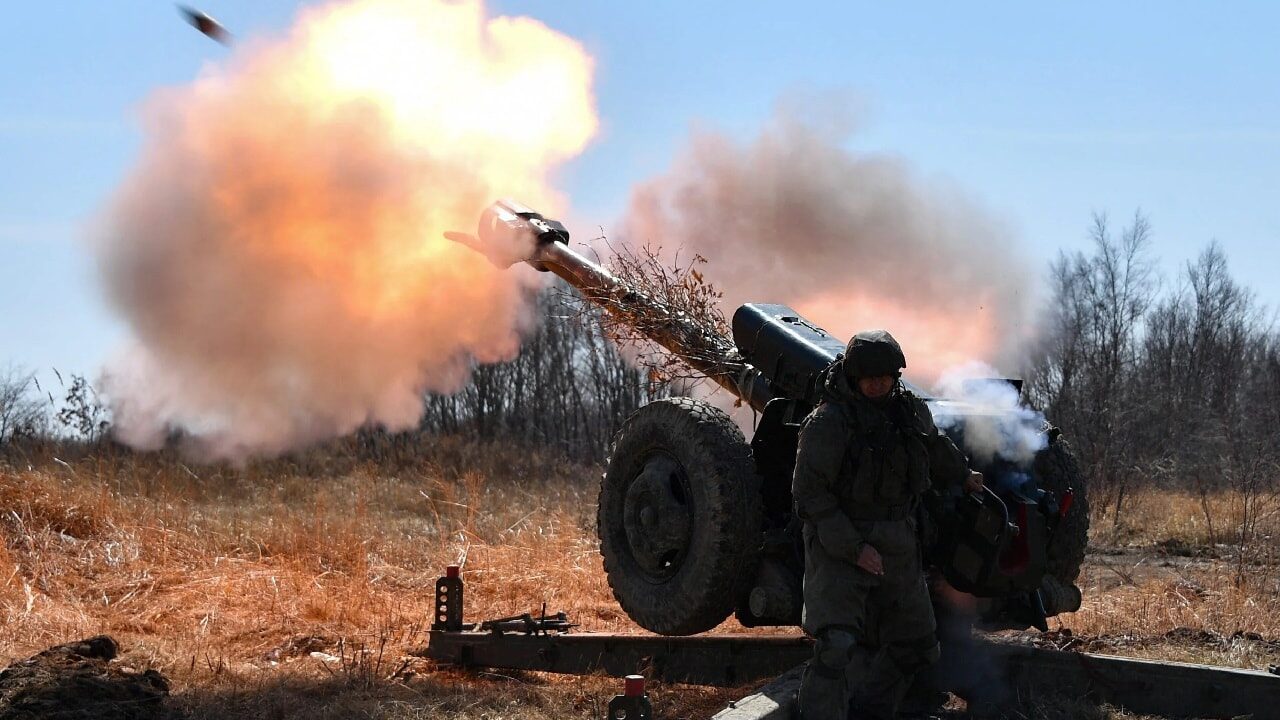Russia’s Secret Weapon: Russia’s artillery is taking its toll on Ukrainian cities. It’s the Russian way of war – hold territory, attempt to encircle cities, and lob shells into business or residential areas until the enemy capitulates.
Many Russian artillery attacks are comprised of howitzers firing unguided “dumb” conventional shells. These are indeed lethal, but Russian artillery forces also have precision-guided “smart” artillery rounds that can accurately hit specific targets – not only tanks and armored vehicles – but also buildings. Russia can use these guided shells to eliminate enemy soldiers and to kill and maim civilians.
What Is the Krasnopol?
The Krasnopol 152mm guided artillery shell is one such smart munition that can be fired from Russian self-propelled or towed howitzers. The laser-guided projectile is often shot at the enemy’s artillery systems – known as counter-battery fire. So, it can take on multiple-launch rocket systems and tubed guns. It can also be successful against command and control centers, bunkers, and bridges.
How Traditional Artillery Works
Traditional artillery practices consist of firing until forward spotters “walk” the shells toward the target by adjusting fire. Precision-guided munitions eliminate the need for this process and can pinpoint a target with extreme accuracy so that one shot (instead of several shots) can eliminate it.
Designed to Produce Maximum Damage
The Russians can use the Krasnopol to destroy civilian targets such as apartment complexes, houses, and buildings where non-combatants are taking cover. Each artillery battalion is usually outfitted with 200 Krasnopols so you can imagine the damage these shells can cause.
Better Than the American Laser-guided Shells
First used in the Russian wars against Chechnya, the Krasnopol can be compared favorably to the American Copperhead laser-guided projectile. Some U.S. Army analysts even believe the Krasnopol is superior to the Copperhead in range, shell weight, targets engaged, and ease of handling. The Copperhead was effectively employed in the Second Gulf War during the lead-up to the invasion of Iraq.
Russia’s Long-range Fires
The has a range of 12.4 miles. There is a variant called the Krasnopol-M that can be fired from a 155mm tube, but it has a shorter range. The Krasnopol munition has a high-explosive fragmentary warhead with a 70 to 80 percent hit probability. Each shell weighs a hefty 111-pounds, and it takes two soldiers to lift it into a firing position. One downside of the Krasnopol is that it cannot be used in tandem with an autoloader, so the rate of fire is reduced. Alternatively, the Krasnopol-M is compatible with an autoloader.
Shell Guidance
“The Krasnopol’s gyroscopic homing head locks onto the laser target beam, and aerodynamic control surfaces (located on the projectile body) guide the projectile to the target,” according to a researcher writing for the U.S. Army Training and Doctrine Command.
It’s On the Battlefield Performing Fire Missions
The powerful Msta-S self-propelled howitzer uses the Krasnopol. So does the Akatsiya 152mm tracked howitzer. This video shows soldiers loading Krasnopols into an Akatsiya for a firing mission at targets near Kyiv.
The Ukrainians must keep in mind that all field artillery units may have the Krasnopol. They should continue to target Russian field artillery with drones and counter-battery fire. The invaders are only limited by the number of laser-guided projectiles that they have on hand. But the Russians may be having difficulty with re-supply due to the Ukrainians attacking logistic lines. So, the defenders must keep attacking the vehicles that are hauling Krasnopols to the front because the Russians are sure to keep launching the laser-guided shells at military and civilian targets.
Now serving as 1945’s Defense and National Security Editor, Brent M. Eastwood, PhD, is the author of Humans, Machines, and Data: Future Trends in Warfare. He is an Emerging Threats expert and former U.S. Army Infantry officer. You can follow him on Twitter @BMEastwood.

